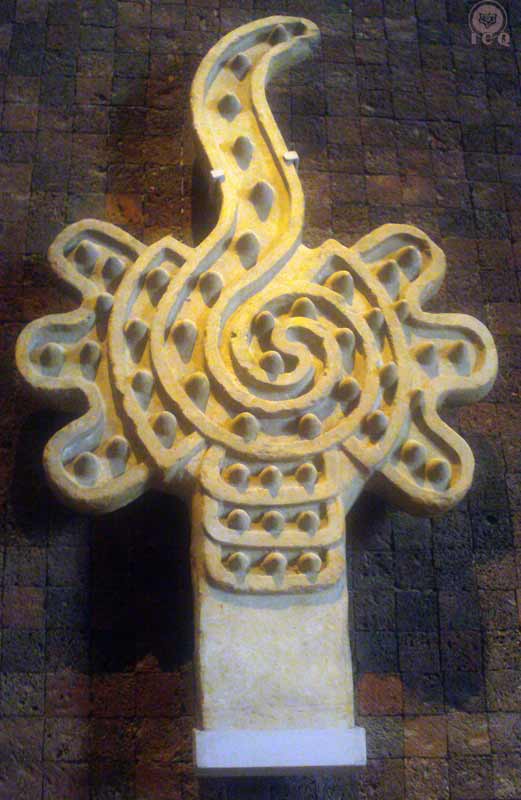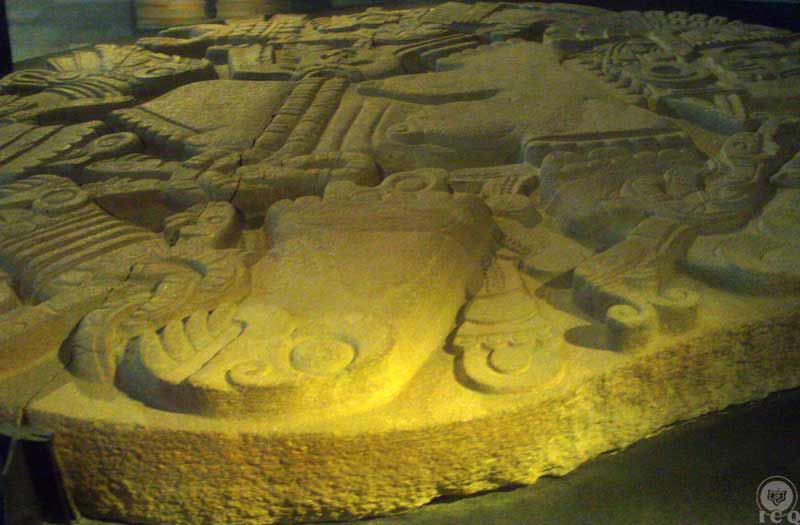The Birth of the Left-Handed Hummingbird [Huitzilopochtli]
Introduction
When we long with all of the strength of our soul to discover the way that can take us to the experience of the Truth, we tend to find paths that are complex, akin to the labyrinths of times long past when the aspirant sought the way; the difference today being such complex paths are made up of numerous contradictory theories.
In these very conditions and considering we are in the midst of an age of spiritual ignorance, it becomes difficult to find the path that leads to the light of immortal wisdom and it has become highly complicated to find the keys that can lead us to redemption and transformation.
The number of schools and philosophies that promise their offering of the Truth abound as weeds and because of this, it is common for many, as they continue their search, to end up disillusioned not finding what they have for so long sought-after.
ALMENA CARACOL. Cross-sectional rendition of a seashell; symbol of Venus, the Morning Star and symbol of love. (Museum of History and Anthropology, Mexico)
Luckily, there is something we can hold-on to within this intricate storm of opinions.
The one thing that can show us the correct path to follow is found in the wisdom left behind by the great masters and captured in codices, papyruses, sacred scriptures, pyramids, legends, myths, ancestral stories, and millenary sepulchers.
In the words of the great master Jesus: "For those who have eyes to see, so they can see…"
Which is exactly where we should spend our effort to discover the path into the light of wisdom. All the wisdom has been left behind as millenary teachings, just as is the case of the birth of the "Left-Handed Hummingbird" [Huitzilopochtli] of the ancient traditions of Mexico. Fortunately we find this myth in the Florentine Codex.
The myth narrates the miraculous origin of the "Left-Handed Hummingbird" [Huitzilopochtli], conceived by a ball of feathers that descended from the heavens and that was safeguarded in the bosom of "The One with the Skirt of Serpents" [Coatlicue]. It speaks to the life-threating dangers they overcame from the Four-Hundred brothers who were led by Huitzilopochtli's older sister, "The One Adorned with Rattles" [Coyolxauqui], and culminates with the defeat and death of them all.
In a single myth we can find multiple teachings majestically intertwined and disguised under the veil of mystery, so that only those who have the understanding – as stated by the great master Jesus – would understand. Here is this wisdom.
"The Left-Handed Hummingbird" [Huitzilopochtli] is the sun, "The One Adorned with Rattles" [Coyolxauqui] is the moon and the Four-Hundred Southerners, the stars; and they embody a narrative of ancient cosmogony.
Simultaneously, the story is also the narration of the internal work that must be practiced by every human being who strives to achieve the heights of the self-realization of the Being and in that sense, we must make an effort to find each of the characters in this myth, not as part of a story from a remote past, but at this very instant of our lives and within our own selves.
This is a story we must bring into our lives and into our flesh, as it is the key that leads to true happiness, to the experience of interior liberation and to acquire the real peace that only divinity can offer. In these writings we have found a concrete didactic for the elimination and death of our psychological aggregates.
The secret path of liberation is a core longing of every human being and these millenary teachings indicate just how to find it. Join us as we unearth these sacred mysteries and drink of an initiatic wisdom that, as you will see, has always existed within your own consciousness.
"The One Adorned with Rattles" [Coyolxauqui] (Museum of the Major Temple, Mexico)
-------The name Florentine Codex is given to the writings titled "Universal History of the Things of New Spain" documented by the Spanish Franciscan Monk Bernardino de Sahagún between the years 1540 and 1585. The version of "The Myth of the Birth of Huitzilopochtli" used in this treatise is the translation of Miguel Leon-Portilla, from his works: "Mexico-Tenochtitlan: Su Espacio y Tiempo Sagrados". INAH. 1979.


